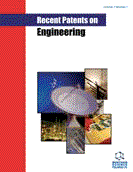Abstract
Background: The performance of a Dye-Sensitized Solar Module (DSSM) has been investigated under different outdoor air mass (AM), irradiance intensity and temperature conditions in Wajir, Kitui, Vihiga and Kajiado Counties in Kenya.
Methods: The performance was thereafter compared with that of Amorphous Silicon (a-Si) devices undertaken under similar weather conditions in Nigeria. The DSSM's good response to short wavelength radiation made it perform better at increased AM values than what has been reported of a- Si PV modules.
Results: Studies on a-Si showed that their performance favors low AM conditions. The DSSM generally performed better than what is reported of a-Si, based on irradiance and temperature dependence. Nonetheless, a-Si devices performed better at higher irradiance intensities. These results show that Dye-Sensitized and a-Si technologies complement each others’ performance when subjected to the outdoor field AM, irradiance and temperature conditions.
Conclusion: These findings can be applied in PV sizing, especially for application in Building Integrated Photovoltaics (BIPV) in the tropics.
Keywords: Amorphous silicon, building integrated photovoltaics, complimentarily, dye-sensitized, geo-thermal, solar PV.
Graphical Abstract
Current Alternative Energy
Title:Technology Options for the Built Environment in Kenya: Dye-Sensitized and Amorphous Silicon Photovoltaics for Application in NZE Buildings
Volume: 1
Author(s): Raphael V.M. Otakwa*, Herick Othieno, Awange J. Lagat and Andrew O. Oduor
Affiliation:
- Department of Physics and Materials Science, School of Biological and Physical Sciences, Maseno University, PO Private Bag, 40105 Maseno,Kenya
Keywords: Amorphous silicon, building integrated photovoltaics, complimentarily, dye-sensitized, geo-thermal, solar PV.
Abstract: Background: The performance of a Dye-Sensitized Solar Module (DSSM) has been investigated under different outdoor air mass (AM), irradiance intensity and temperature conditions in Wajir, Kitui, Vihiga and Kajiado Counties in Kenya.
Methods: The performance was thereafter compared with that of Amorphous Silicon (a-Si) devices undertaken under similar weather conditions in Nigeria. The DSSM's good response to short wavelength radiation made it perform better at increased AM values than what has been reported of a- Si PV modules.
Results: Studies on a-Si showed that their performance favors low AM conditions. The DSSM generally performed better than what is reported of a-Si, based on irradiance and temperature dependence. Nonetheless, a-Si devices performed better at higher irradiance intensities. These results show that Dye-Sensitized and a-Si technologies complement each others’ performance when subjected to the outdoor field AM, irradiance and temperature conditions.
Conclusion: These findings can be applied in PV sizing, especially for application in Building Integrated Photovoltaics (BIPV) in the tropics.
Export Options
About this article
Cite this article as:
Otakwa V.M. Raphael *, Othieno Herick , Lagat J. Awange and Oduor O. Andrew , Technology Options for the Built Environment in Kenya: Dye-Sensitized and Amorphous Silicon Photovoltaics for Application in NZE Buildings, Current Alternative Energy 2017; 1 (1) . https://dx.doi.org/10.2174/2405463102666170306162043
| DOI https://dx.doi.org/10.2174/2405463102666170306162043 |
Print ISSN 2405-4631 |
| Publisher Name Bentham Science Publisher |
Online ISSN 2405-464X |
 20
20 1
1
- Author Guidelines
- Bentham Author Support Services (BASS)
- Graphical Abstracts
- Fabricating and Stating False Information
- Research Misconduct
- Post Publication Discussions and Corrections
- Publishing Ethics and Rectitude
- Increase Visibility of Your Article
- Archiving Policies
- Peer Review Workflow
- Order Your Article Before Print
- Promote Your Article
- Manuscript Transfer Facility
- Editorial Policies
- Allegations from Whistleblowers
- Announcements



















